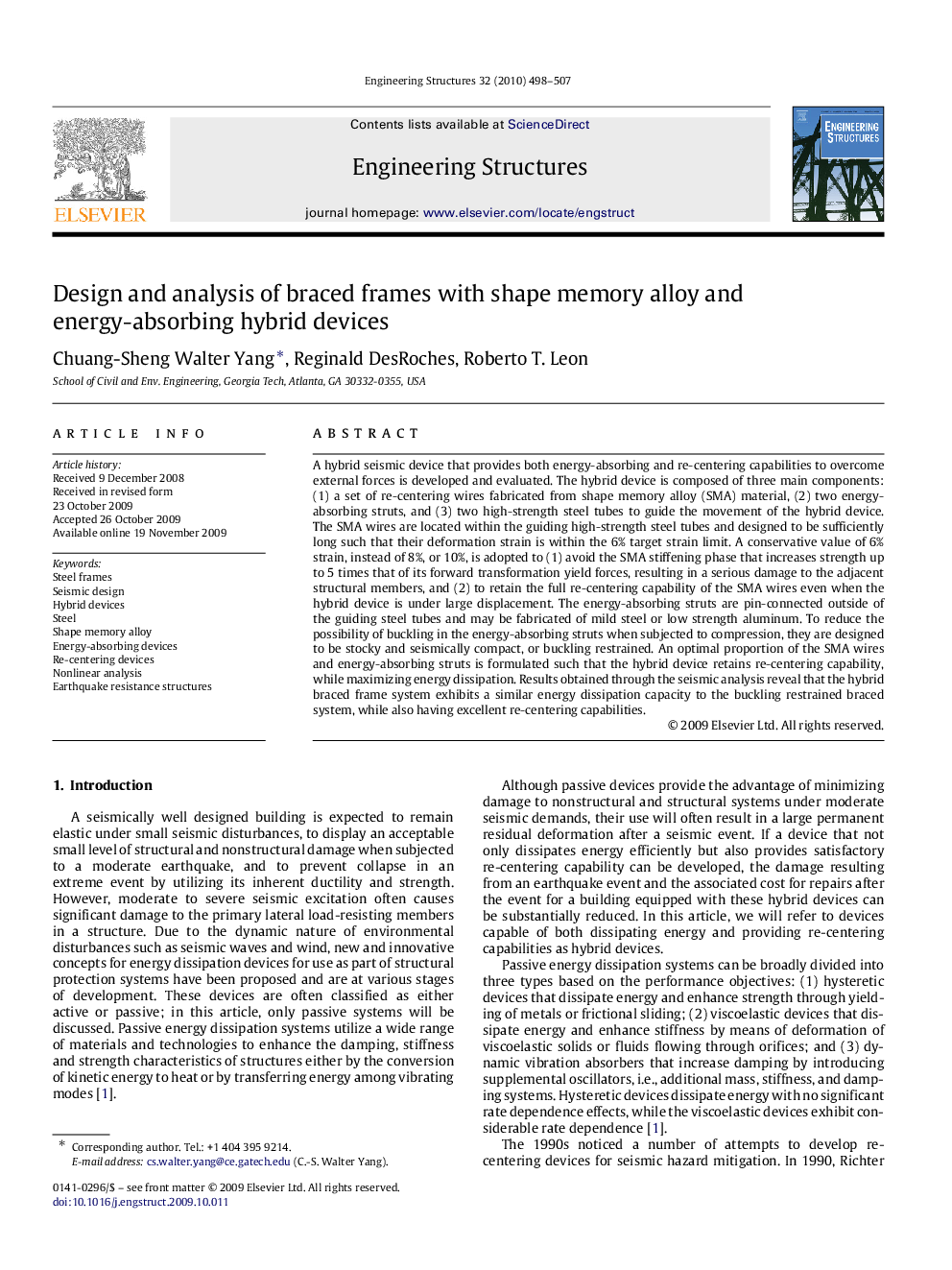| Article ID | Journal | Published Year | Pages | File Type |
|---|---|---|---|---|
| 268265 | Engineering Structures | 2010 | 10 Pages |
A hybrid seismic device that provides both energy-absorbing and re-centering capabilities to overcome external forces is developed and evaluated. The hybrid device is composed of three main components: (1) a set of re-centering wires fabricated from shape memory alloy (SMA) material, (2) two energy-absorbing struts, and (3) two high-strength steel tubes to guide the movement of the hybrid device. The SMA wires are located within the guiding high-strength steel tubes and designed to be sufficiently long such that their deformation strain is within the 6% target strain limit. A conservative value of 6% strain, instead of 8%, or 10%, is adopted to (1) avoid the SMA stiffening phase that increases strength up to 5 times that of its forward transformation yield forces, resulting in a serious damage to the adjacent structural members, and (2) to retain the full re-centering capability of the SMA wires even when the hybrid device is under large displacement. The energy-absorbing struts are pin-connected outside of the guiding steel tubes and may be fabricated of mild steel or low strength aluminum. To reduce the possibility of buckling in the energy-absorbing struts when subjected to compression, they are designed to be stocky and seismically compact, or buckling restrained. An optimal proportion of the SMA wires and energy-absorbing struts is formulated such that the hybrid device retains re-centering capability, while maximizing energy dissipation. Results obtained through the seismic analysis reveal that the hybrid braced frame system exhibits a similar energy dissipation capacity to the buckling restrained braced system, while also having excellent re-centering capabilities.
